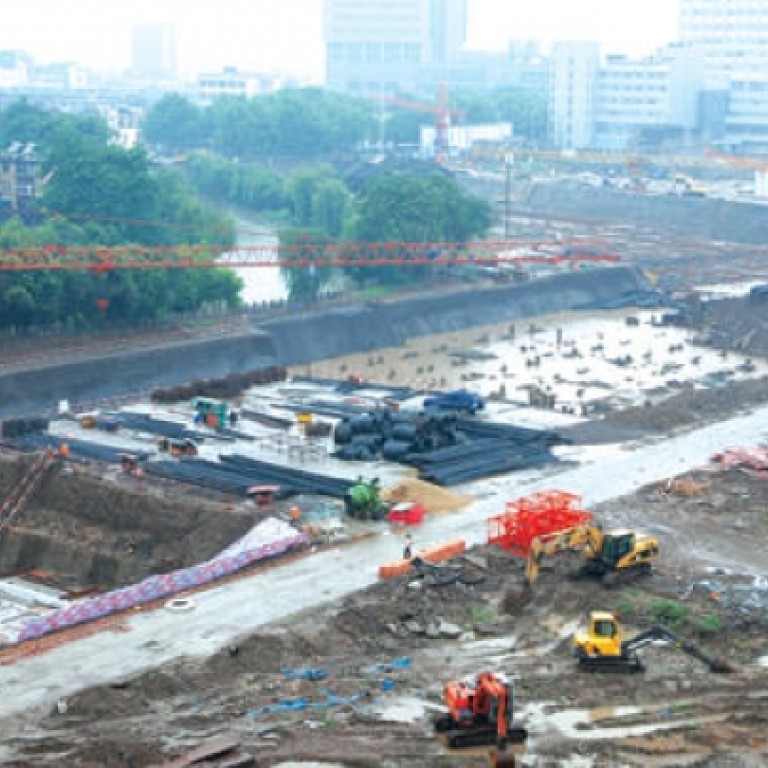
Battle hots up to save ancient buildings in Zhenjiang, Jiangsu
Cultural heritage experts and villagers are calling for the protection of dozens of ancient buildings in a village in Zhenjiang, Jiangsu, which are on the verge of demolition by the authorities' bulldozers.
Cultural heritage experts and villagers are calling for the protection of dozens of ancient buildings in a village in Zhenjiang, Jiangsu, which are on the verge of demolition by the authorities' bulldozers.
It is the latest example of tussling between government officials' pursuit of economic growth and the public's desire of protecting cultural relics.
A plan released about a month ago by the Zhenjiang Economic and Technological Development Zone said all houses in Ge village, which is administered by the town of Dinggang, would be pulled down, apart from nine old houses included in the national heritage list.
The village, home to more than 530 families, dates back to the Southern Song dynasty (AD 1127-1279), when its first settlers moved south from Shandong to avoid warfare.
Wang Yongping, an architecture professor at Nanjing University of Technology, said he had led a team of 160 students to investigate Ge village in 2011 and they had found 67 well-preserved buildings with Ming dynasty (AD 1368-1644 ) and Qing dynasty (AD 1644-1911) features.
"These buildings form the oldest, the largest and most completely preserved residential blocks in northern Jiangsu," he said. "Those buildings, with their elegant ornamentation, such as stone and wood carving, are of great cultural value."
Three years ago the local authorities considered applying to the provincial government for recognition of Ge village as a "historic cultural village" because of its 62 ancient houses as well as several old roads and wells, but they did not proceed with the application, the reported.
The village was targeted for demolition two years ago, when officials announced a plan to level most of it in just 100 days. Local officials have since admitted that little progress was made due to opposition from villagers. A letter signed by 186 villagers in 2011 said "protecting our ancient village is protecting culture".
Dinggang party secretary Xu Renlan said demolishing the village was part of the town's urban plan and rebuilding would not feature any commercial property.
"Our goal is to build up a modern village incorporating modern and ancient elements and co-ordinating the causes of protecting heritage and improving people's living environment," Xu said on June 20.
Zhao Jian , deputy party secretary of the development zone's social development bureau, said the demolition plan had not been finalised and it was awaiting a response from the province's Cultural Heritage Bureau.
The bureau told Zhenjiang's city government in 2011 that Ge village should be preserved as a whole in order to maintain its historic style, the reported.
A propaganda official working for the zone's social development bureau, who declined to give his name, said a survey it had conducted found that 90 per cent of villagers supported the demolition plan and some had even petitioned higher levels of government to speed up the project so that they could live in modern flats.
Eighty-year-old Villager Xie Huaichun said he objected to the demolition partly because he did not want to lose his 300-year-old house, and also because the compensation offered by the authorities was too low.
"They offered us 1,000 yuan [HK$1,253] per square metre and that's one-tenth of the price of a high-end apartment in Zhenjiang," he said. "But if they raise the compensation to 7,000 yuan or more, I think I can accept the eviction."
Wang said ancient houses in three villages near Ge village, which had been untouched in 2011, had all been demolished. "I feel heartbroken seeing the fate of those houses," he said. "Local officials are illiterate hooligans."
Three years ago, reports in the mass media that ancient underground grain stores in Zhenjiang were being damaged by a developer forced a halt to the project and resulted in the developer amending its design.

